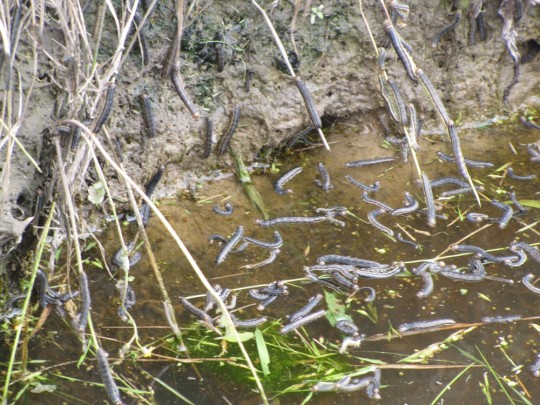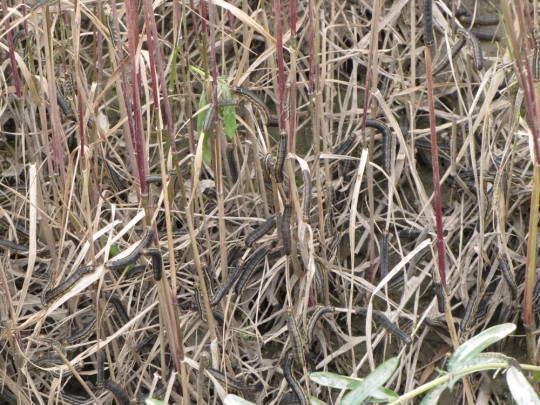Armyworms Reach Impressive Levels in Southwestern Illinois Wheat
Wheat producers, especially in southwestern Illinois, should be scouting their fields for armyworms and considering the need to apply a rescue treatment. Kevin Black, Insect and Plant Disease Technical Manager, Growmark, Inc., reported on June 7 that large numbers of armyworms were leaving roadside ditches, moving into adjacent wheat fields, and inflicting heavy damage. Armyworm densities and damage in one wheat field located northeast of St. Louis was particularly impressive. Because of the heavy rains this spring and the lack of mowing, ditch banks and roadsides have thick stands of tall fescue and brome grass. These sites have served as attractive egg laying targets for migrating armyworm moths. Producers are encouraged to scout their wheat fields and pastures for potentially heavy armyworm feeding.
Below are some photographs of the armyworm infestation provided by Mr. Kyle Heimann of M & M Service Company. He indicated to Kevin Black that treatments have been applied to some fields with only marginal success.


For more information about the identification, biology, life cycle, and management of armyworms, please consult the fact sheet on this insect pest provided by the Department of Crop Sciences, University of Illinois.
Mike Gray





